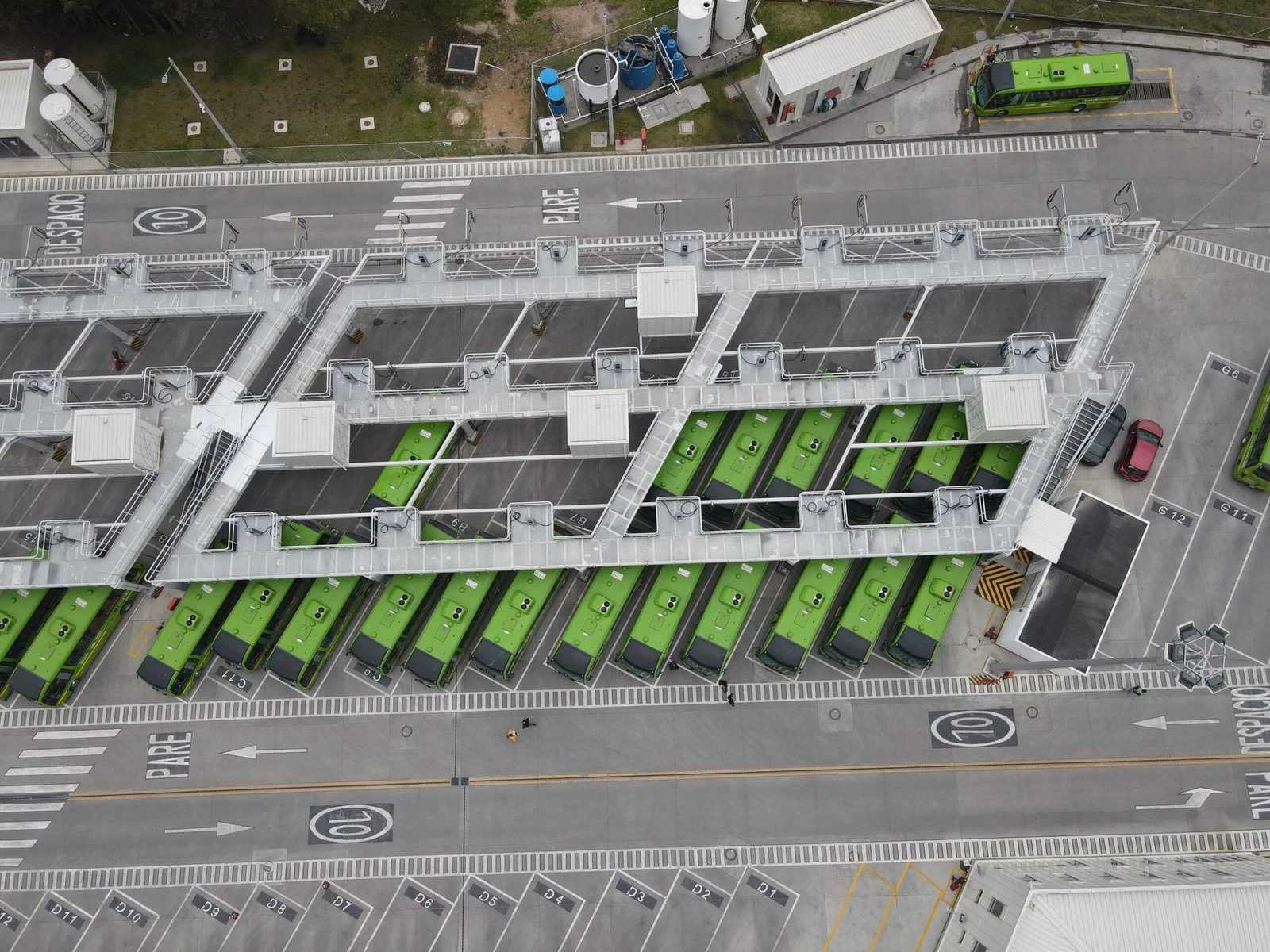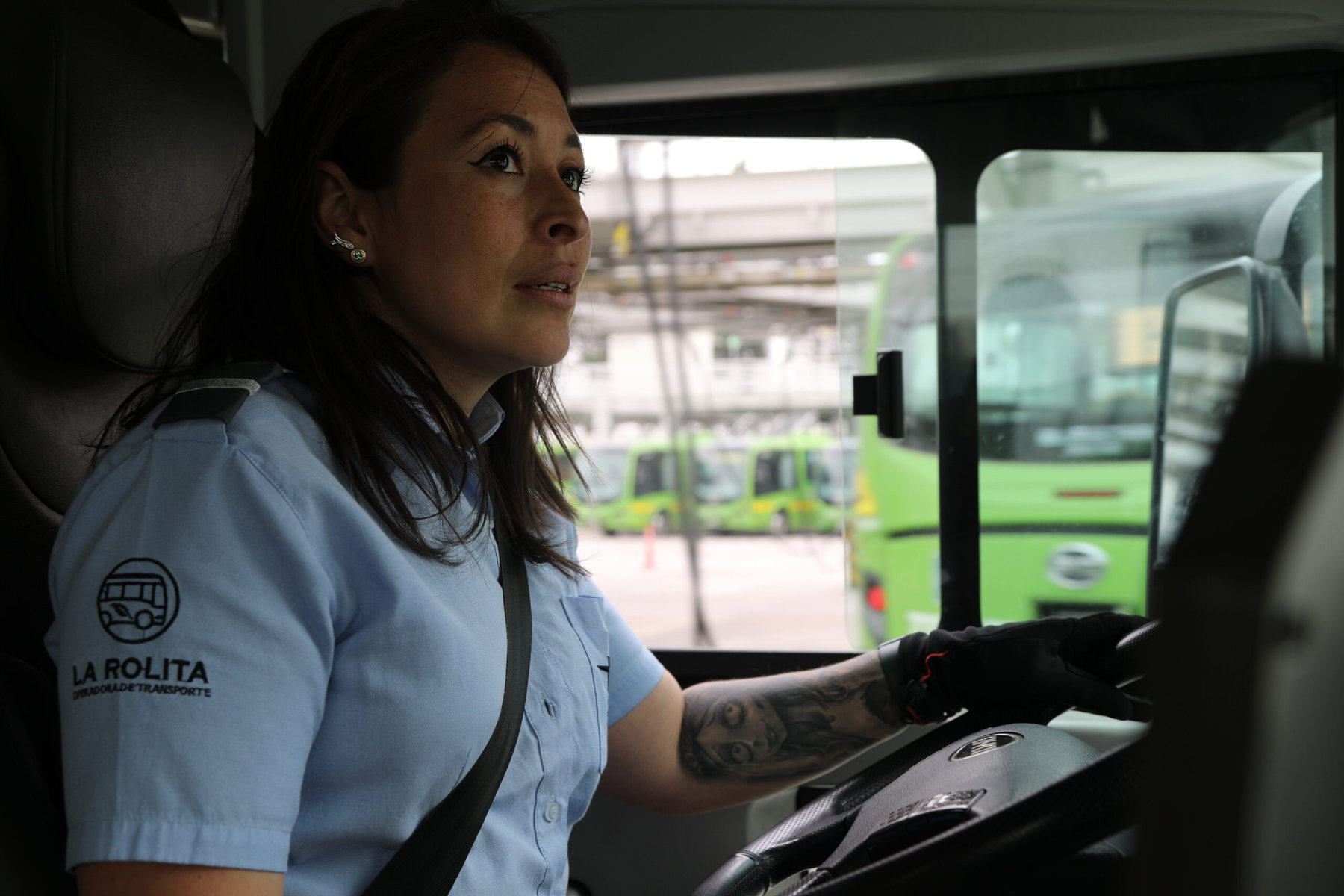The Women Bus Drivers Overcoming Stereotypes in Bogotá
When Paola Perez shifts into gear and puts her foot down on the accelerator, the lime-green bus zips forward with an almost-silent whoooosh. Neat rows of dozens of identical vehicles are visible on either side through its large rectangular windshield.
“This is a very beautiful place to work,” says Perez, as she steers the bus through the pleasingly symmetrical universe of white lines, smooth gray asphalt and angular metal platforms that house nearly 200 electric charging stations. “It’s new, it’s clean and it all works.”
 La Rolita’s 195 buses are 100 percent electric. Credit: Peter Yeung
La Rolita’s 195 buses are 100 percent electric. Credit: Peter Yeung
This impressive space in the southwest of Colombia’s capital, Bogotá, which opened in September 2022, is the headquarters of a project taking a rare gendered approach to urban mobility. Nicknamed La Rolita — a diminutive of the word for a person from Bogotá, un rolo or una rola — it is a public transit operator largely driven by women.
“It feels like a sorority,” says Perez, 37, who has been a driver since the start. “There’s a camaraderie. We speak to each other and help each other whenever we can.”
By placing women at the heart of La Rolita, which employs about 300 female drivers and is led by a female director, city authorities are creating a more sustainable, safe, equal and just transport system in the sprawling metropolis of eight million people.
 Paola Perez, who has been driving with La Rolita from the beginning, has found a camaraderie among the women who work there. Credit: Peter Yeung
Paola Perez, who has been driving with La Rolita from the beginning, has found a camaraderie among the women who work there. Credit: Peter Yeung
“This is a masculinized sector that we are working in,” says Carolina Martinez, the organization’s general manager. “But we are beginning to change that. There are many positive and important opportunities for us to benefit from in the long term.”
For one, according to Martinez, women bus drivers have fewer traffic accidents: La Rolita, which is the city’s only public bus operator, has the second-lowest number of injuries due to accidents — 72 in 18 months — when compared with the numerous private bus operators. (Other research backs this up: One study published in 2020 by Belgium’s road traffic institute Vias found that generally women drivers “take fewer risks behind the wheel than men” and “are less involved in serious accidents.”)
The presence of female drivers in public transit also helps female passengers to feel safer in the face of high levels of gender-based violence across the city, adds Martinez. A survey in 2020 found that 84.3 percent of women in Bogotá have experienced sexual harassment while using public transit.
The post The Women Bus Drivers Overcoming Stereotypes in Bogotá appeared first on Reasons to be Cheerful.